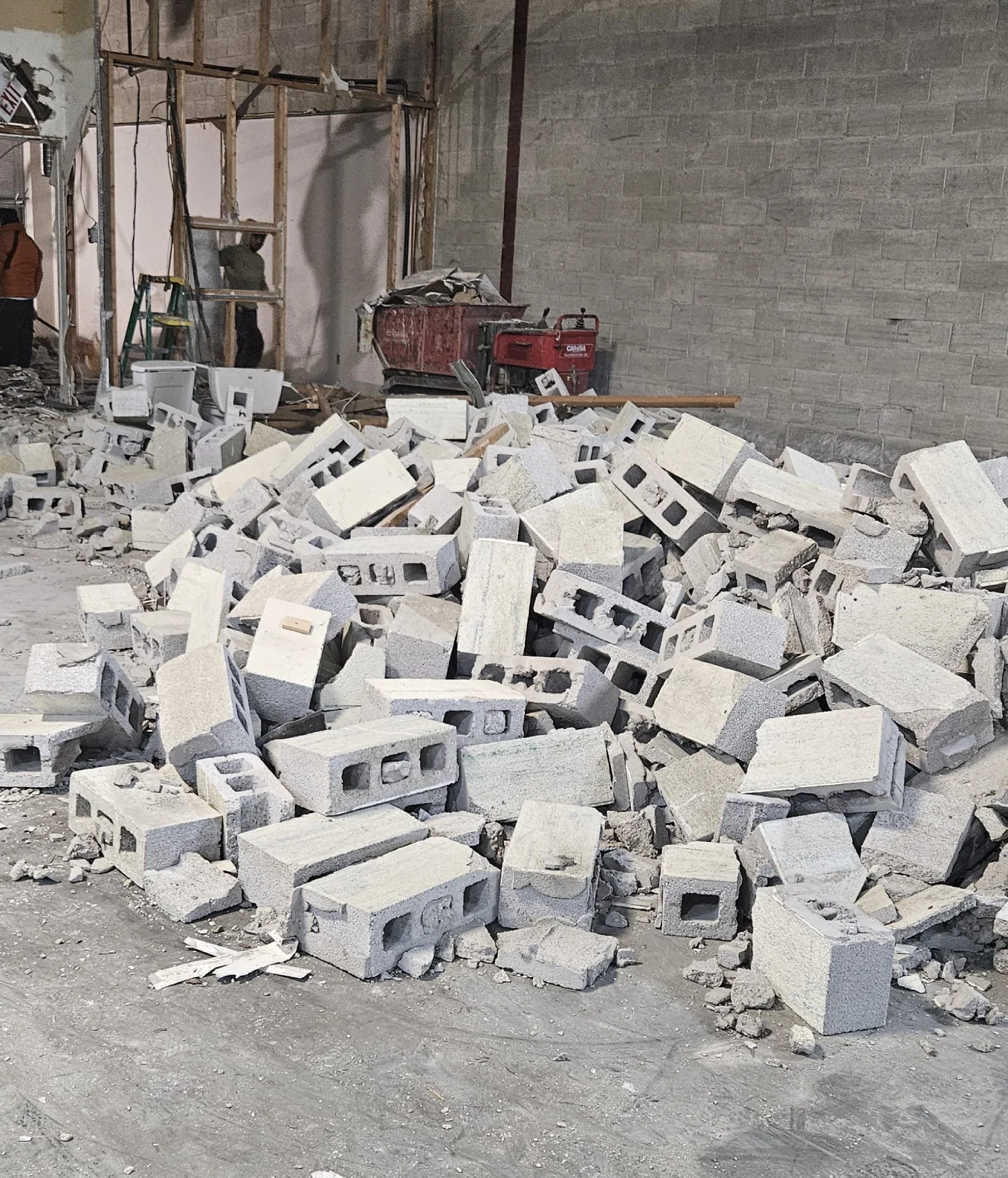Ever stood in front of a solid concrete wall or slab and thought, “How on earth do I cut through this?” You’re not alone—and luckily, you’re in exactly the right place. At Anchor Cutting & Coring, we specialize in professional concrete cutting in Mississauga, delivering precise, clean cuts with minimal mess and zero stress. Whether you’re a homeowner, contractor, or business owner, we’re here to handle the hard stuff—literally. Why Does Precision Concrete Cutting Matter More Than You Think? Let’s face it—concrete is tough. That’s its job. But when it comes time to modify, repair, or remove it, you don’t want just anyone taking a saw to your structure. Do you really want to risk cracks, noise, dust, or uneven finishes? With our advanced tools and skilled technicians, you won’t have to. Our concrete cutting in Mississauga combines state-of-the-art equipment with years of experience to give you the results you expect—and then some. Wondering What We Can Cut Through? Just about anything! Whether it’s a driveway, basement wall, factory floor, or even reinforced concrete with embedded steel, we’ve got it covered. Our services include: Wall sawing Slab sawing Core drilling Curb cutting Custom concrete solutions Not sure which type of cutting you need? Ask us! We’ll walk you through it and recommend the best option for your project. What Makes Our Concrete Cutting in Mississauga Stand Out? Great question. It’s not just the equipment (though ours is top-of-the-line), or the speed (we’re fast, no doubt), or even our accuracy (which is on point every time). It’s the full package—professionalism, transparency, and care. From the moment you contact us, you’ll notice something different: we listen. Want your job done right the first time, with no surprises? Then you’re going to love working with us. We believe that concrete cutting in Mississauga should be simple, safe, and hassle-free—and that’s exactly how we deliver it. Have a Timeline? A Budget? A Weird Project? No Problem Every project is unique, and that’s half the fun for us. Whether you’re renovating your home or prepping for a commercial install, we’ll tailor our approach to fit your schedule and your needs. Tight space? Sensitive environment? Special cut shapes? We’ve seen it all—and solved it all. That’s the beauty of working with a team that lives and breathes concrete cutting in Mississauga. No matter how complex your project looks, we’ll make it feel simple on your end. Ready to Get Started? Let’s Talk! Still have questions? Curious how the process works or what it might cost? We’re happy to chat. Give us a call, shoot us an email, or fill out our quick online form. We’ll answer all your questions (yes, even the ones you think are silly) and give you a free, no-obligation quote. Don’t let concrete slow your project down. Discover why more people trust Anchor Cutting & Coring for expert concrete cutting in Mississauga—and experience the difference precision makes.
Concrete Cutting in Mississauga: Techniques, Applications, and Industry Insights
Concrete is the backbone of modern urban construction, and its adaptability has allowed cities like Mississauga to grow, renovate, and improve infrastructure efficiently. However, the strength that makes concrete ideal for construction also makes it challenging to modify without specialized skills and tools. This is where the practice of concrete cutting in Mississauga becomes not just beneficial, but essential. Whether it’s for structural remodeling, utility installations, or precise architectural modifications, concrete cutting plays a pivotal role in a broad array of projects. It demands a nuanced approach, encompassing technical knowledge, safety adherence, and strategic planning. This blog dives into the intricate world of concrete cutting, exploring its significance, methods, challenges, tools, and relevance in Mississauga’s construction landscape. Understanding Concrete Cutting Concrete cutting is the controlled removal of concrete through various specialized tools and techniques. Unlike demolition, which is destructive and often messy, cutting is precise, calculated, and aims to preserve the structural integrity of surrounding materials. Why is Concrete Cutting Necessary? Utility Access: Create pathways for electrical wiring, plumbing, and HVAC systems. Design Adjustments: Modify or remove sections for doors, windows, or staircases. Structural Assessments: Extract core samples for strength testing or engineering evaluations. Surface Corrections: Remove damaged or uneven slabs to ensure safety and function. Renovation Projects: Tailor existing spaces to meet new design or functionality requirements. Concrete cutting makes it possible to adapt rigid structures to changing needs without complete demolition. Importance of Concrete Cutting in Urban Infrastructure Mississauga’s diverse infrastructure includes residential neighborhoods, commercial properties, and public facilities. As these structures age or evolve, the need for precision alterations becomes more frequent. Key Contributions of Concrete Cutting to Urban Growth: Infrastructure Upgrades– Mississauga frequently undergoes infrastructure renewal projects, such as road expansions, pedestrian walkways, and utility upgrades. Concrete cutting enables safe removal or modification of existing elements like curbs, slabs, and roads without affecting the integrity of the surrounding environment. Utility Expansions– Modern cities need to accommodate growing utility demands. Concrete cutting creates access points for new sewer lines, water systems, fiber optic cables, and electric conduits. Smart Urban Planning– With initiatives toward smart city development, existing buildings often require adjustments. Smart lighting, sensors, or upgraded HVAC systems may need concrete penetrations for installations. Heritage Building Preservation– Precision cutting allows for renovations in older buildings without compromising their historic value. Openings for accessibility upgrades or safety enhancements can be introduced carefully. Common Concrete Cutting Techniques Each concrete cutting method serves a unique purpose. The choice of technique depends on the type of concrete, location of the cut, desired depth, and purpose of the operation. Flat Sawing (Slab Sawing)- Flat sawing is used for horizontal surfaces such as floors, pavements, and bridge decks. It involves walk-behind machines equipped with diamond blades. Detailed Applications: Removing cracked driveway slabs. Trenching for underground utilities in commercial warehouses. Making expansion joints in industrial flooring to prevent cracking. Accessing water or gas pipes in residential basements. Advantages: Fast and efficient. Minimal vibration and dust. Suitable for both indoor and outdoor use. Wall Sawing- Wall sawing uses track-mounted machines to create cuts in vertical or inclined surfaces. It allows for straight, clean, and measured cuts. Detailed Applications: Adding new doorways or windows in concrete walls. Retrofitting ventilation systems in commercial buildings. Cutting elevator shafts or stairwells in multi-story buildings. Advantages: High precision. Quiet operation suitable for occupied buildings. Can cut through reinforced concrete walls up to several inches thick. Core Drilling– Core drilling involves removing a cylinder of concrete using a rotating core drill bit embedded with diamond segments. Detailed Applications: Installing plumbing pipes through walls or floors. Creating pathways for electrical conduits. Extracting core samples for quality control testing. Anchoring bolts for structural supports. Advantages: Highly accurate. Produces minimal debris. Capable of deep drilling. Wire Sawing- Wire sawing uses a metal cable with diamond beads to cut large sections of concrete. It is ideal for cutting thick structures or areas with limited access. Detailed Applications: Dismantling bridge sections. Cutting reinforced concrete pillars or large foundation blocks. Removing massive concrete tanks or silos. Advantages: Versatile for irregular shapes. Reduced noise and vibration. Ideal for confined spaces or large-volume cuts. Hand Sawing and Ring Sawing– Handheld saws offer flexibility for smaller or more intricate cuts. Ring saws, in particular, allow for deeper cuts in tight areas. Detailed Applications: Bathroom or kitchen remodeling in homes. Making precision cuts around corners or existing installations. Indoor jobs with space constraints. Advantages: Lightweight and portable. Quick setup and mobility. Good for emergency access or repairs. Tools and Equipment Used in Concrete Cutting Successful concrete cutting projects depend on a mix of high-performance tools and supportive equipment. In Mississauga, modern technology ensures these tasks are completed safely and efficiently. Core Cutting Equipment: Diamond Blade Saws: Provide sharp, fast cuts and are designed to cut through concrete, asphalt, or stone. Track-Mounted Wall Saws: For precision vertical or diagonal cuts. Core Drills: Rotating drill bits designed for deep, circular holes. Wire Saws: Operate using a flexible wire and are capable of handling massive cutting tasks. Supporting Equipment: Dust Control Systems: Wet-cutting systems or vacuum extractors reduce airborne silica. Power Sources: Gasoline, hydraulic, electric, or battery-powered machines depending on job site accessibility. Vibration Dampeners: Help reduce operator fatigue and maintain blade integrity. Modern tools enhance productivity while reducing noise, dust, and environmental impact. Safety Protocols in Concrete Cutting Concrete cutting is inherently hazardous. Dust exposure, flying debris, and the risk of collapse or tool malfunction necessitate strict safety protocols. Critical Safety Measures: Use of PPE (Personal Protective Equipment) Respirators to guard against silica dust. Eye protection to block debris. Gloves, steel-toe boots, and protective clothing. Pre-Cut Inspection Identifying load-bearing elements to avoid structural compromise. Locating hidden utilities to prevent accidents. Ventilation and Dust Management Using wet cutting or vacuum systems to control dust. Ensuring adequate airflow in enclosed areas. Operator Training Only certified operators should handle machinery. Workers should be trained in emergency procedures. Tool Maintenance Routine checks on blades, drills, and saws to prevent mechanical failure. Safety not only protects workers


